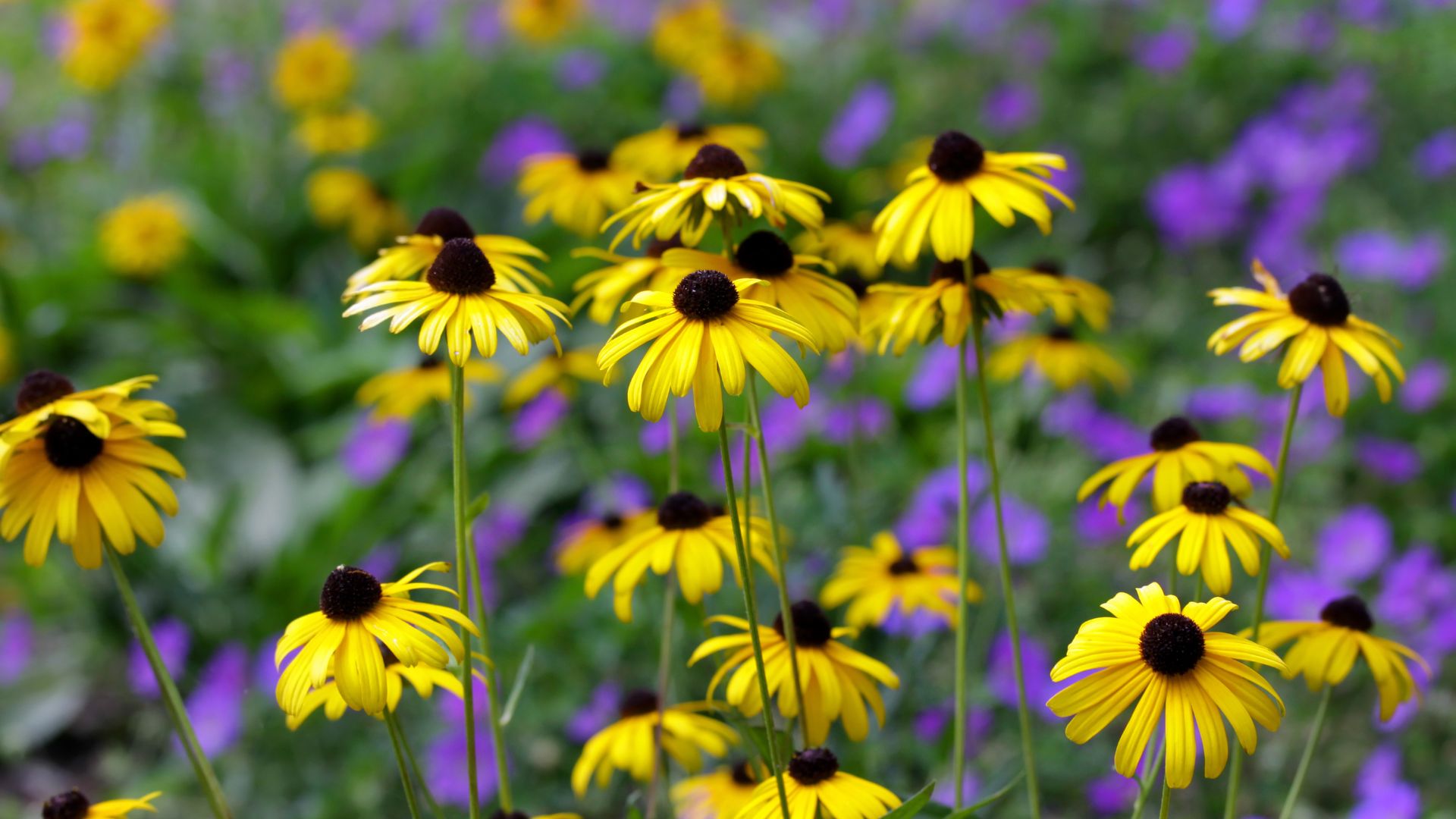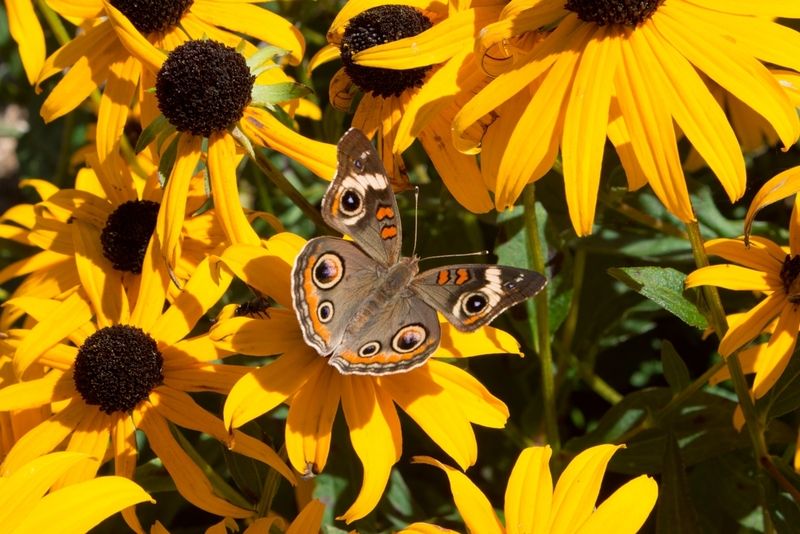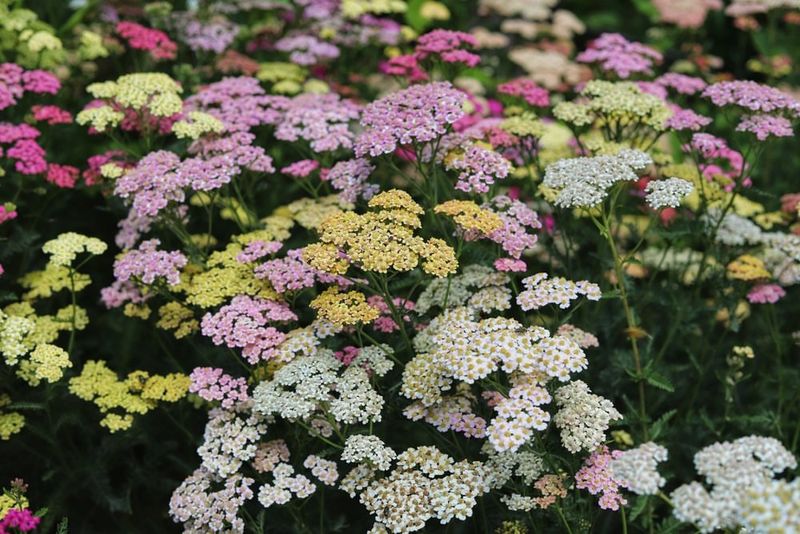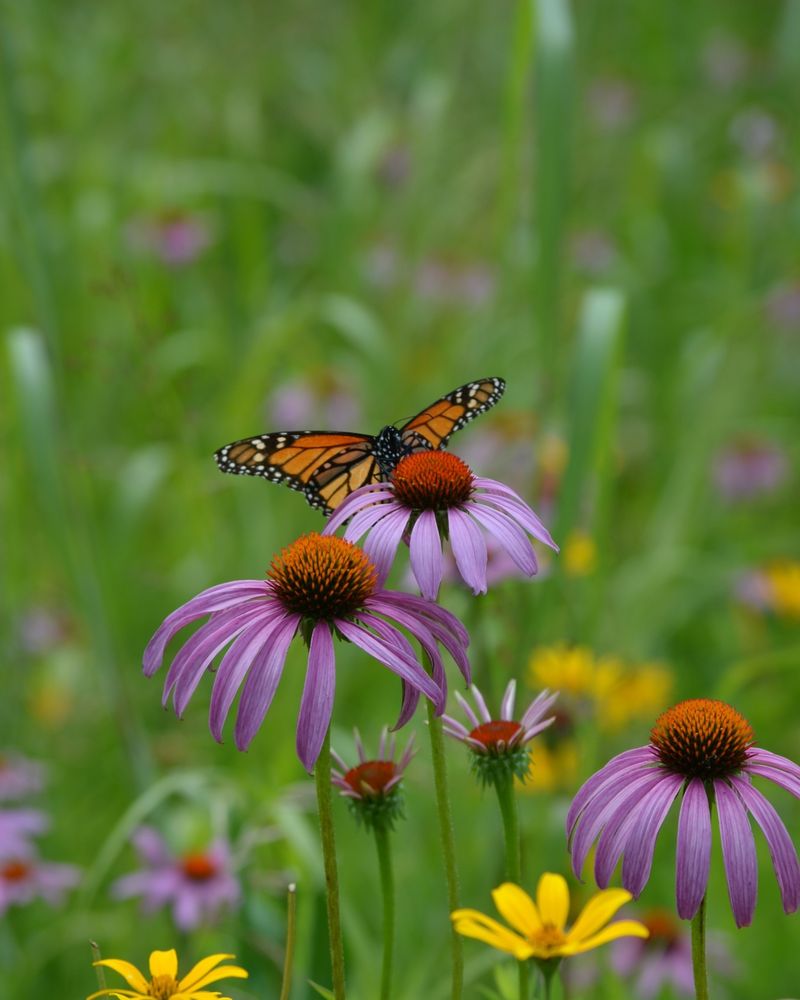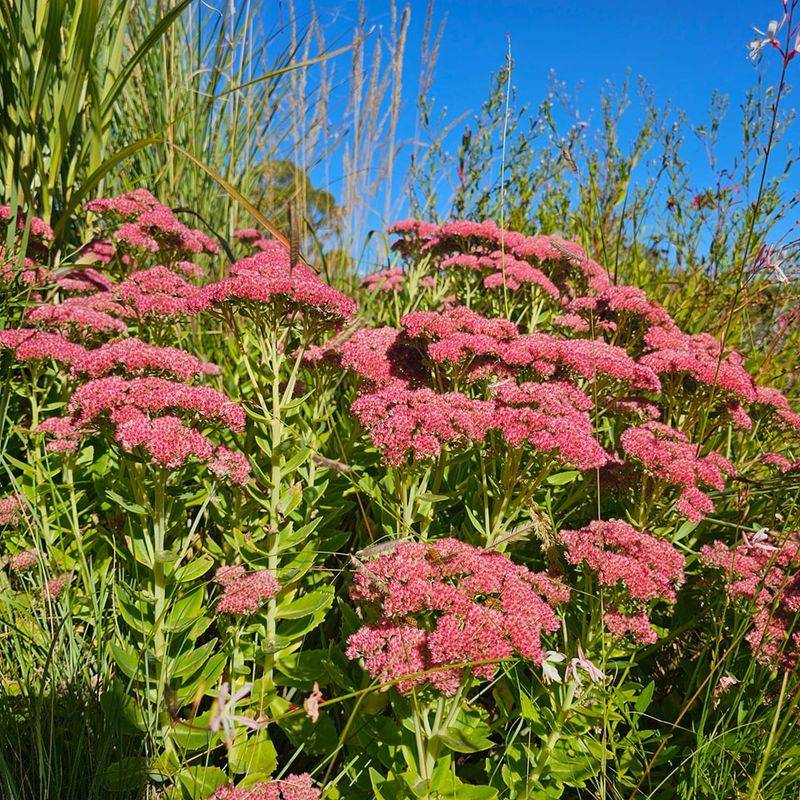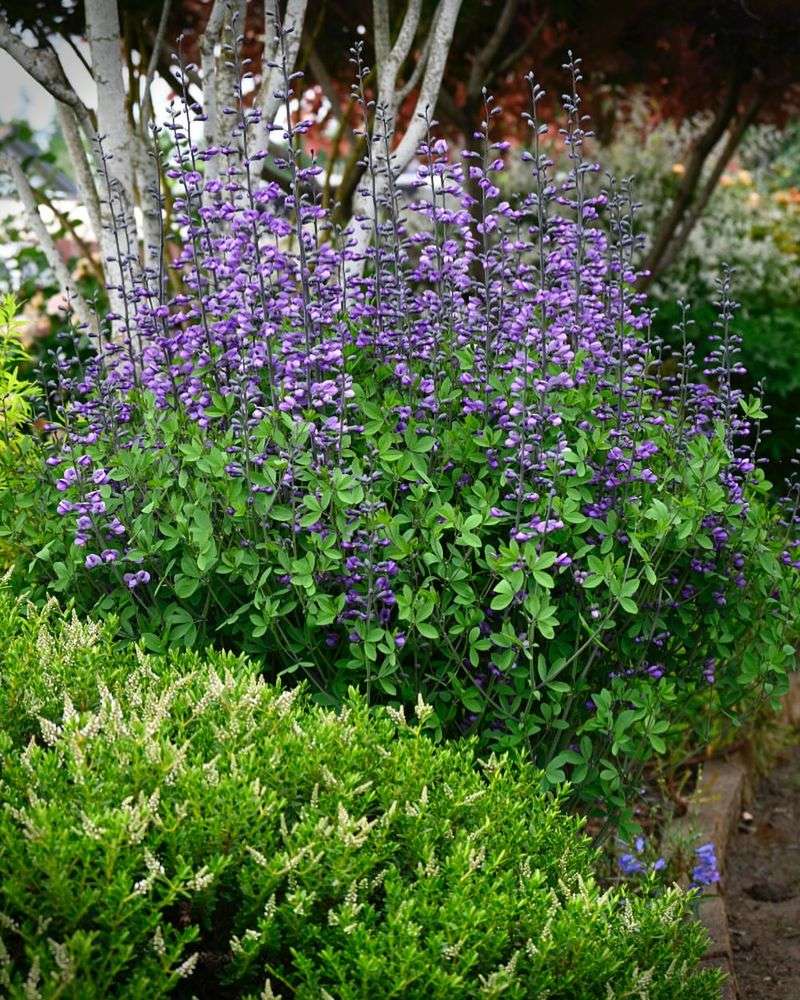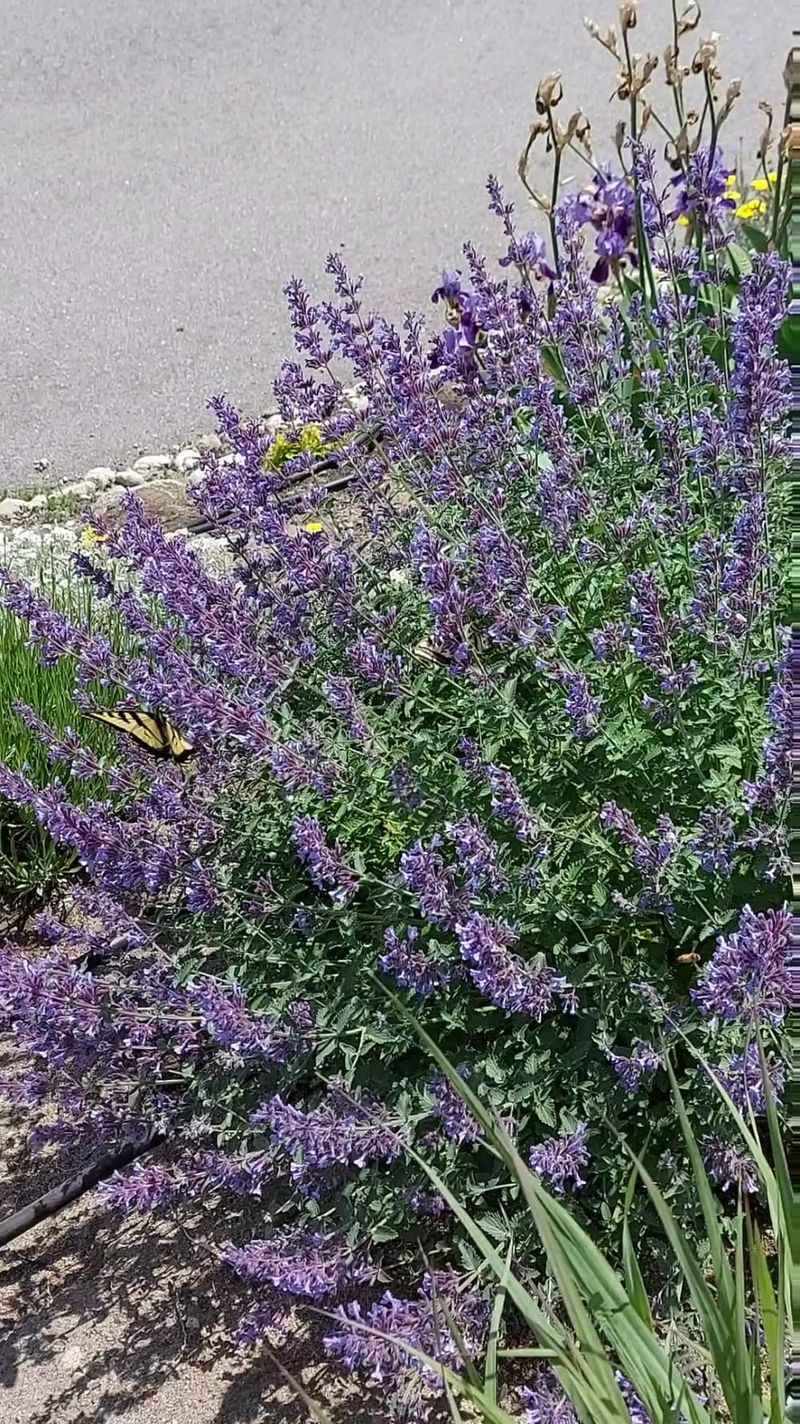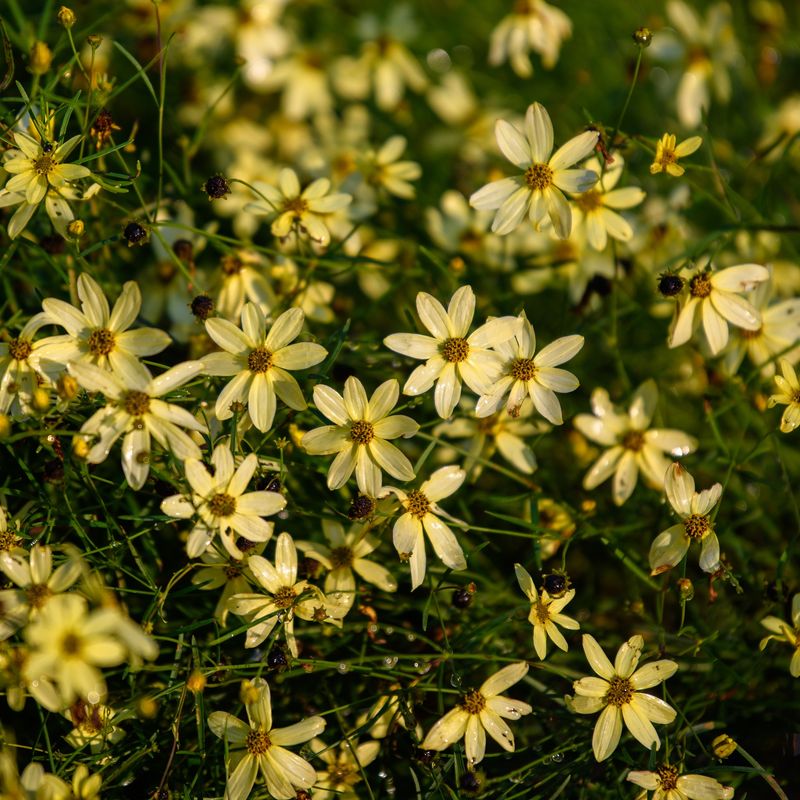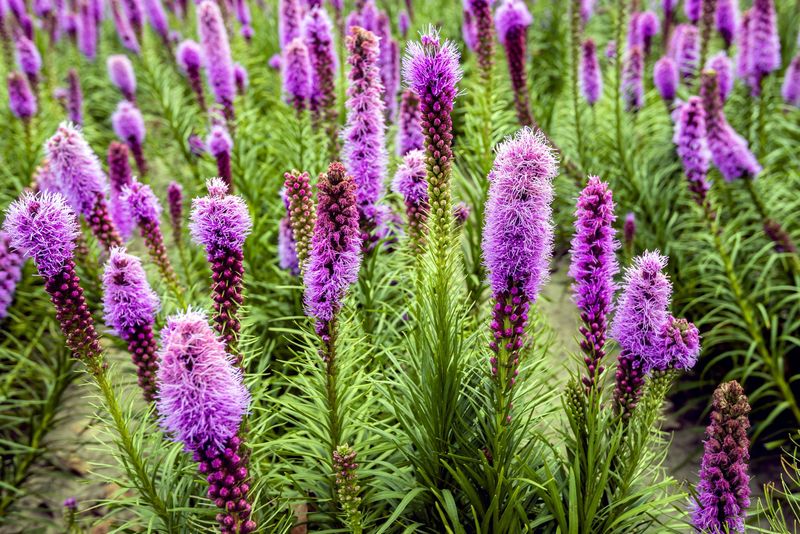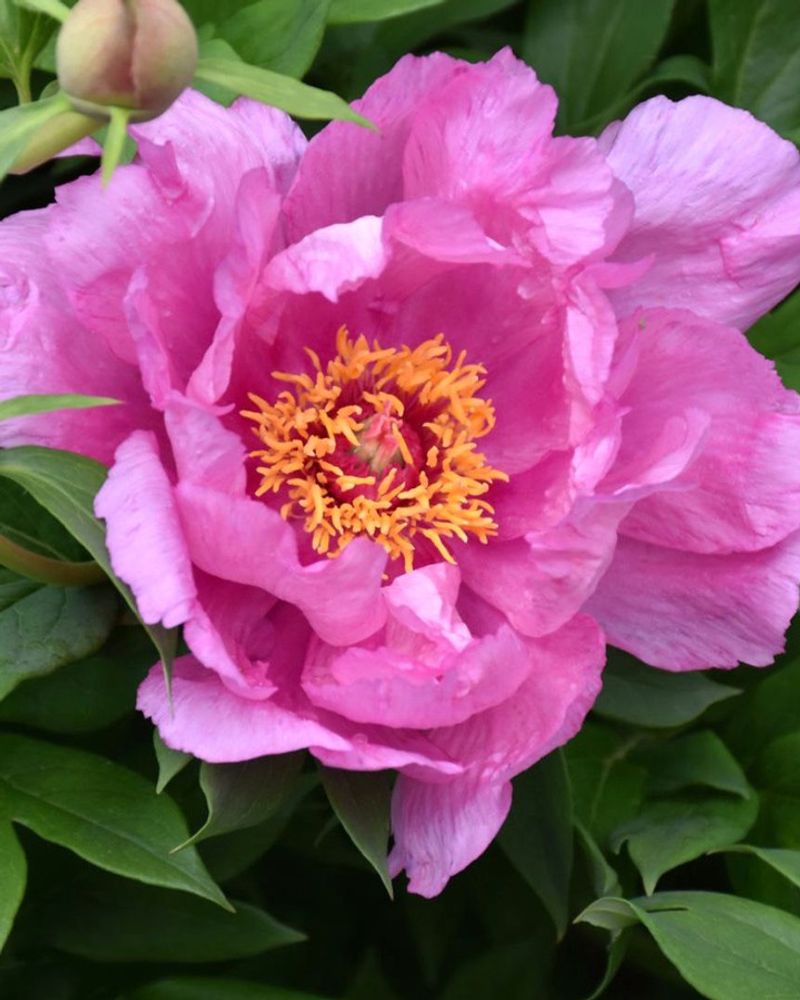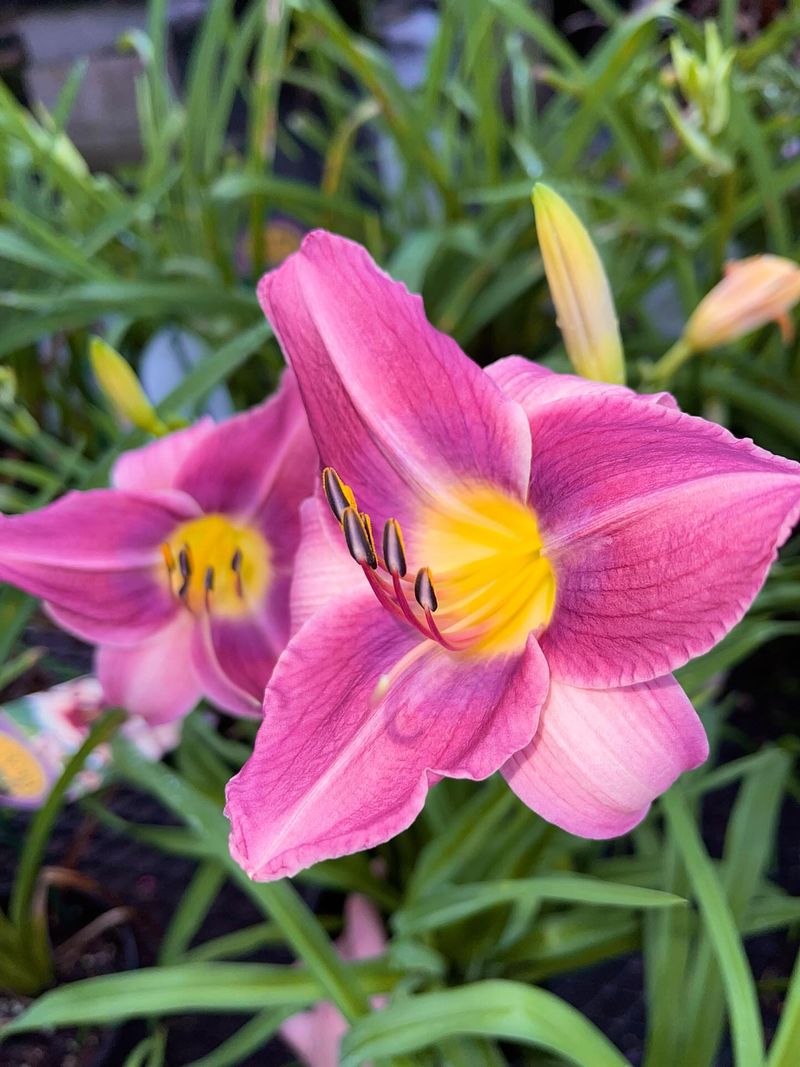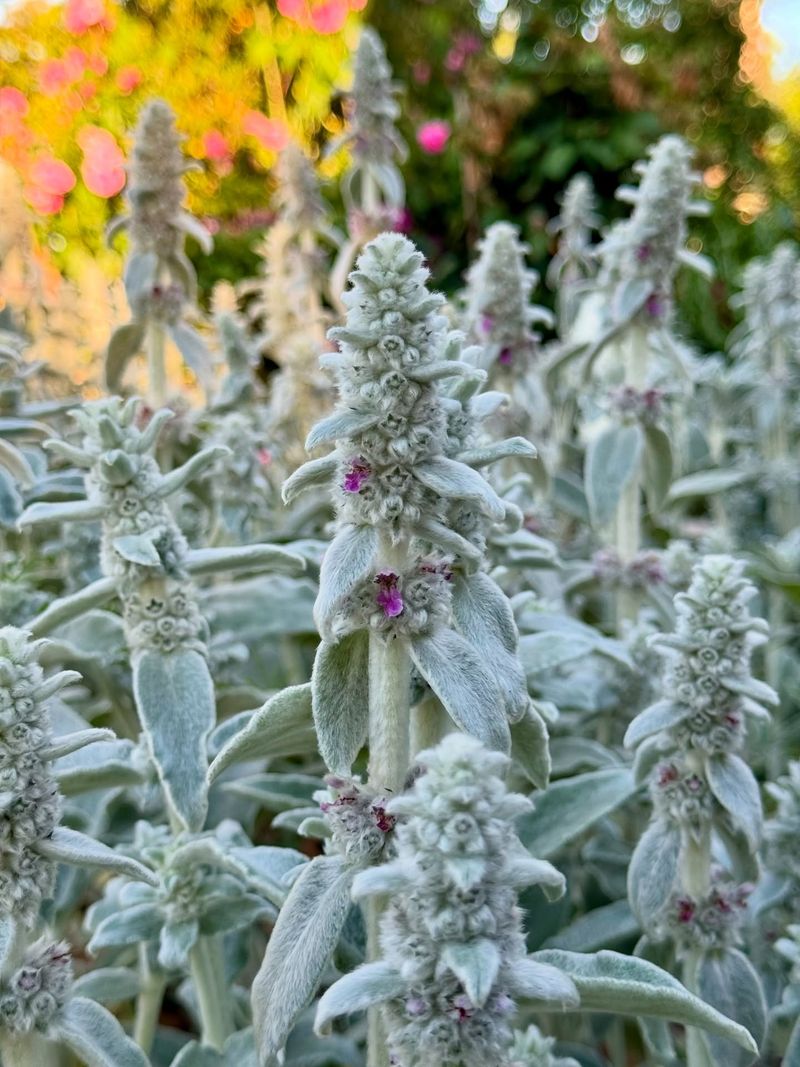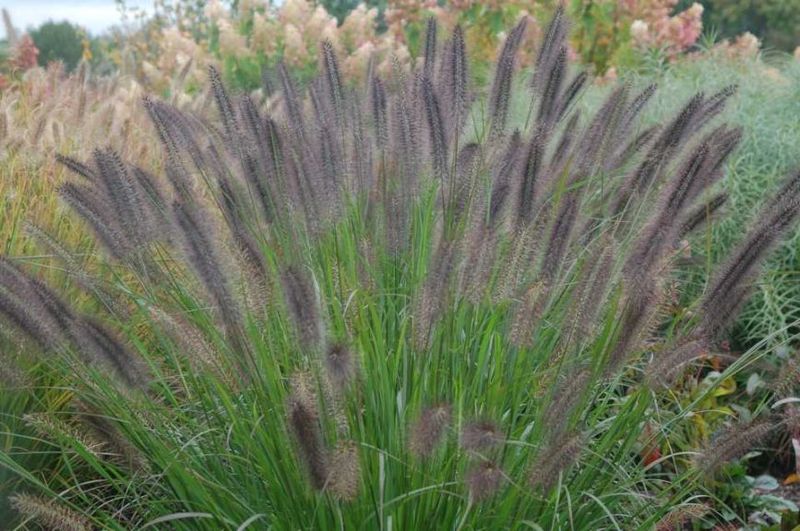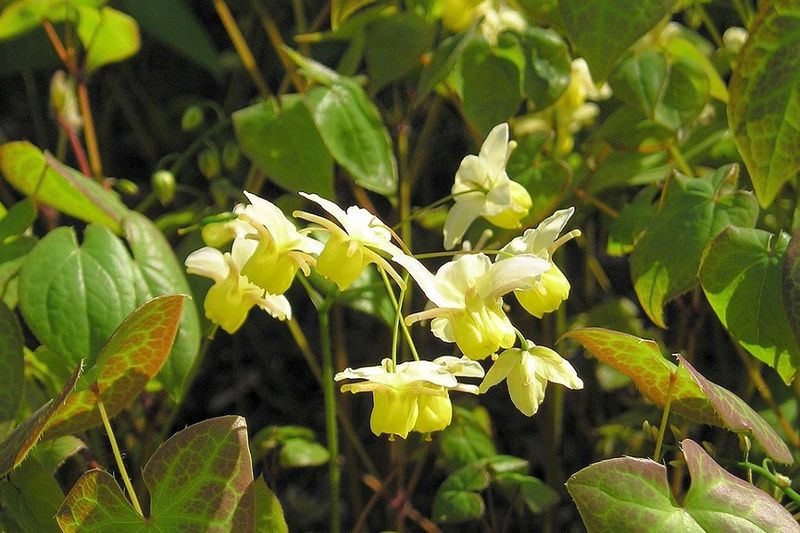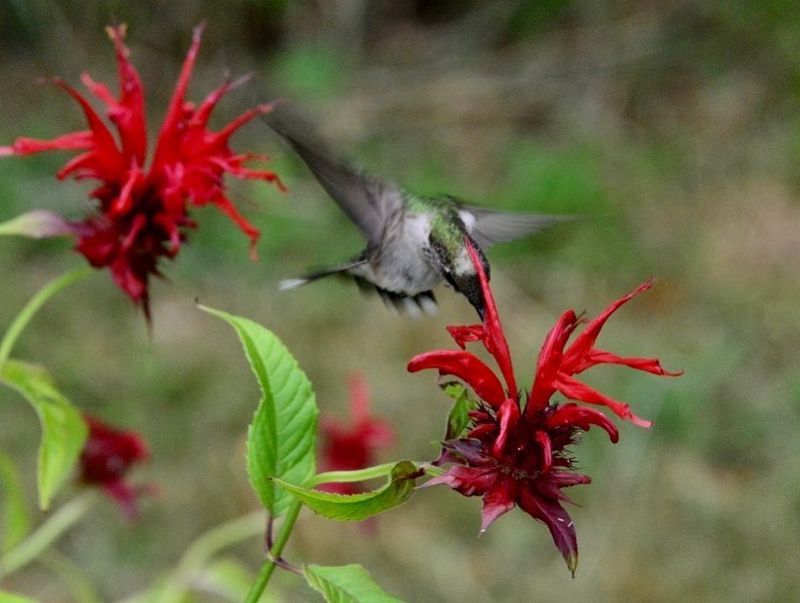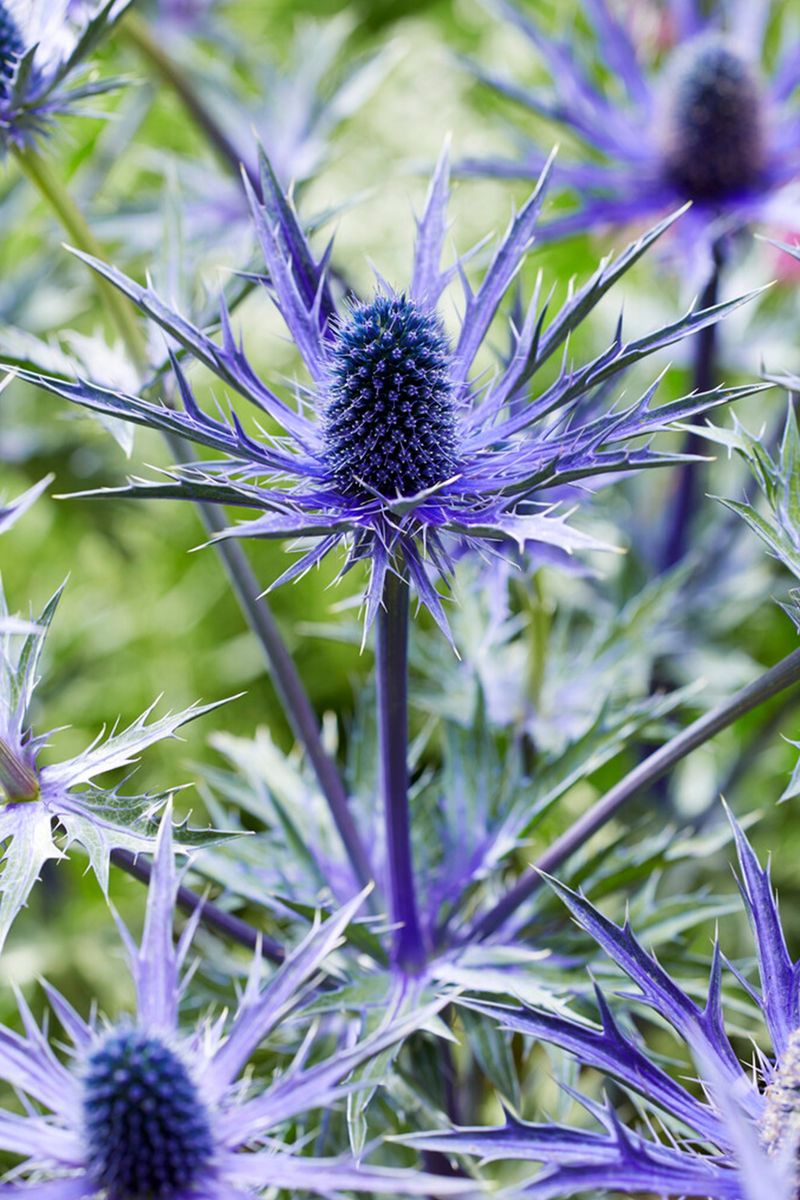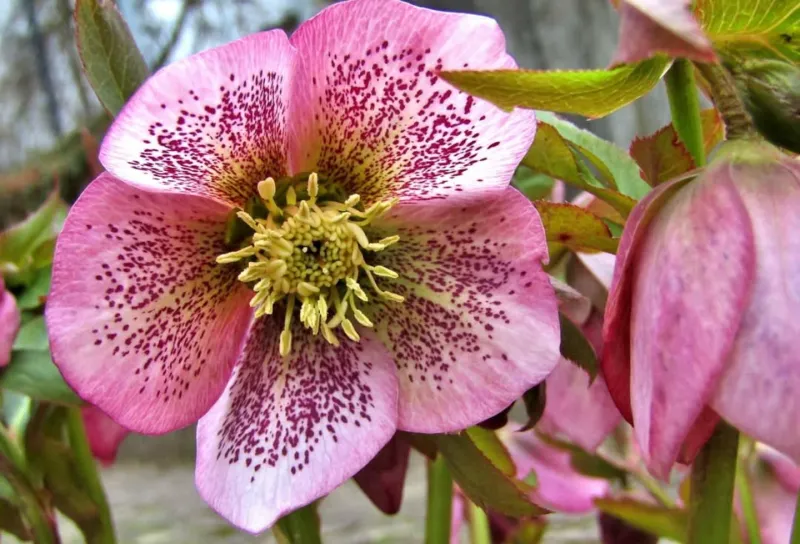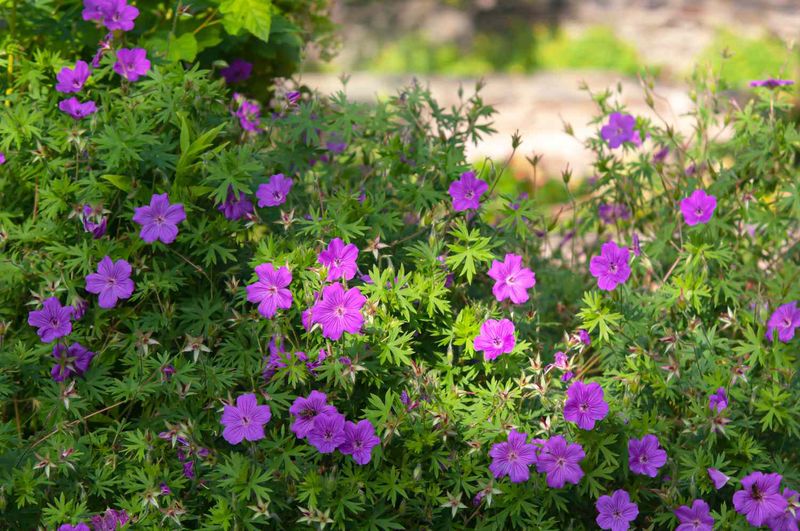Gardening can sometimes feel like a full-time job, but it doesn’t have to be that way. There are plenty of plants that actually do better when you give them a little breathing room and less fuss. These hardy perennials are perfect if you’re busy, forgetful, or just want a garden that takes care of itself.
What’s great about these plants is they don’t just survive—they thrive. Left alone, they bloom longer and grow stronger without constant watering, pruning, or pampering. It’s like having a garden that works with your lifestyle, not against it.
If you want beautiful blooms without the stress, this collection of low-maintenance perennials is exactly what you need. They’ll turn your outdoor space into a relaxing haven, all while giving you more free time to enjoy it.
1. Russian Sage
Silvery-blue spires create a cloud-like effect in the garden from midsummer until frost. The more you fuss with Russian sage, the less impressive it becomes.
This drought-tolerant beauty develops its best form and most abundant flowering when planted in poor soil and left completely alone. No deadheading required!
My neighbor tried dividing and pruning hers regularly, while mine flourished with benign neglect. The difference was striking – my untouched plants produced nearly twice the blooms.
2. Black-Eyed Susan
Golden daisy-like flowers with distinctive dark centers brighten gardens from mid-summer through fall. These native prairie plants evolved to handle harsh conditions without human intervention.
Deadheading actually disrupts their natural cycle. When flower heads remain intact, they not only provide winter interest but also feed birds and reseed moderately to fill in garden spaces.
Plant them once in a sunny spot with average soil, then step back. They’ll establish deep roots that help them sail through dry spells while maintaining their cheerful display.
3. Yarrow
Flat-topped flower clusters in shades from white to yellow, pink, and red stand above feathery foliage. Yarrow’s medicinal history dates back thousands of years, but its garden value lies in remarkable self-sufficiency.
The ferny foliage stays attractive even during drought. Flowers last for weeks, gradually drying in place to extend the display into winter if left uncut. Sandy soil and full sun bring out yarrow’s best qualities.
Avoid rich soil and fertilizer, which only creates floppy stems and reduces flowering – this plant performs better when neglected.
4. Coneflower
Distinctive raised centers surrounded by drooping petals create a silhouette recognizable even by gardening newcomers. Native to American prairies, coneflowers evolved without gardeners fussing over them.
Constant deadheading actually reduces their overall bloom time. Left alone, they’ll produce waves of flowers from early summer through fall, with seedheads that feed finches and other small birds.
I’ve watched gardeners struggle with heavily bred, fussy varieties while the simple purple species in my neglected side yard blooms reliably year after year without a drop of supplemental water.
5. Sedum ‘Autumn Joy’
Succulent foliage creates an attractive base for the broccoli-like flower clusters that emerge green, mature to pink, and finally deepen to rusty red. The entire transformation occurs without any intervention needed.
Drought tolerance is built into this plant’s DNA. Watering too frequently or planting in rich soil actually reduces flowering and creates floppy stems that split apart.
Leave the dried flower heads standing through winter for structural interest in the garden. They’ll catch frost and snow in fascinating patterns while protecting the crown of the plant from temperature fluctuations.
6. Baptisia
Lupine-like flower spikes in blue, purple, yellow or white rise above blue-green foliage in late spring. The deep taproot makes this native prairie plant incredibly drought-resistant once established.
Cutting back after flowering actually prevents the decorative seed pods from forming. These rattling black pods provide months of additional interest and winter structure when left in place.
Baptisia resents transplanting or division, so plant it where you want it to stay. Given time and space, a single plant can grow into a spectacular 4-foot shrub-like specimen that blooms for decades without intervention.
7. Catmint
Lavender-blue flower spikes hover above aromatic gray-green foliage from late spring through summer. Unlike many perennials that bloom once and quit, catmint keeps on giving.
After the initial flush of flowers fades, the plant will bloom again without deadheading. This natural reblooming habit continues for months, especially when the plant isn’t disturbed by pruning or excessive watering.
Cats may occasionally roll in it, but they rarely damage the plant significantly. The slightly woody stems hold up well to such attention, quickly recovering to continue their impressive bloom show without human intervention.
8. Coreopsis ‘Moonbeam’
Pale yellow daisy-like flowers blanket this perennial from early summer until frost. The fine, thread-like foliage creates an airy texture that complements the delicate blooms.
Many gardeners make the mistake of cutting back too frequently. When left alone, Coreopsis ‘Moonbeam’ naturally cycles through waves of blooming, with new buds constantly forming as older flowers fade.
Sandy soil in full sun brings out its most floriferous nature. Fertilizer and rich soil produce excessive foliage at the expense of flowers – another example of a plant that performs better with benign neglect.
9. Bearded Iris
Ruffled blooms in nearly every color of the rainbow crown sword-like foliage in late spring. The thick rhizomes store water and nutrients, allowing these plants to thrive in poor soil with minimal care.
Contrary to popular advice, bearded iris actually bloom better when left undivided for years. The clumps become more impressive over time, with increasing flower counts each season.
Excess water is their enemy, causing rot and reducing flowering. Plant them with the rhizomes partially exposed to the sun, then forget about them except for occasional removal of dead leaves in late winter.
10. Blazing Star
Fuzzy purple flower spikes grow upward from the bottom – the opposite of most flower spikes. Native to North American prairies, blazing star evolved to handle extreme conditions without human help.
Butterflies and bees flock to the nectar-rich blooms throughout summer. The unusual blooming pattern (bottom to top) extends the display period naturally, without any deadheading needed. Corms multiply gradually over years, creating increasingly impressive displays.
Unlike many perennials, liatris blooms more prolifically when left undisturbed in the same spot for many seasons, rewarding the hands-off gardener.
11. Peony
Massive, fragrant blooms in shades of pink, red, white, or yellow appear in late spring to early summer. These long-lived perennials can survive for decades—sometimes a century—with almost no care.
Ants crawling on the buds aren’t harmful—they’re collecting sweet nectar while helping the flowers open. No need to wash them off or spray; they’ll leave once the blooms open.
The key to peonies’ longevity is not disturbing them. They resent division and transplanting, often taking years to recover. Plant them once in a sunny spot with good drainage, then simply enjoy the annual show.
12. Daylily
Trumpet-shaped blooms in colors ranging from yellow and orange to pink, purple, and near-red appear in succession over many weeks. Each flower lasts just one day, but plants produce dozens of buds on each stem.
Modern reblooming varieties like ‘Stella de Oro’ perform even better when not deadheaded. Regular deadheading actually exhausts the plants, while leaving spent flowers allows them to direct energy toward producing more blooms.
Daylilies survive conditions that kill other perennials—drought, flooding, poor soil, and temperature extremes. I’ve seen them thriving in abandoned homesteads and roadside ditches, flowering prolifically without any human attention for decades.
13. Lamb’s Ear
Velvety silver-gray leaves form attractive rosettes that spread to create a soft ground cover. The fuzzy texture isn’t just appealing to touch—it’s a natural adaptation that conserves water.
Tall purple flower spikes appear in summer, attracting bees and adding vertical interest. Some gardeners cut these off, but leaving them actually strengthens the plant and allows for gentle reseeding that fills in bare spots.
Excessive watering causes the center of the plant to rot. Plant lamb’s ear in poor soil with sharp drainage, then leave it completely alone for best results—it’s evolved to thrive in neglectful conditions.
14. Ornamental Grasses
Graceful foliage creates movement and texture from spring through winter. Unlike flowers that come and go, ornamental grasses provide continuous interest without deadheading or special care.
Feathery plumes appear in late summer, gradually changing color through fall and winter. These seed heads not only look beautiful when backlit or frosted but also provide food for birds during scarce months.
The secret to success is cutting them back just once yearly in late winter or early spring. Any additional pruning or dividing actually reduces their ornamental value and natural grace—another case where less intervention yields better results.
15. Barrenwort
Heart-shaped leaves emerge with bronzy-red tints in spring, accompanied by dainty dancing flowers that resemble tiny fairy lanterns. This shade-loving perennial quietly solves the problem of dry areas under trees.
New gardeners often overlook barrenwort because it’s not flashy. The subtle beauty reveals itself to patient observers who allow it to form a natural groundcover over several seasons.
Once established, it requires virtually no care beyond a single annual cutting back of old foliage in late winter. Even this step can be skipped, as the plant will push through old growth with fresh leaves each spring.
16. Bee Balm
Spiky, crown-like flowers in red, pink, or purple sit atop square stems with aromatic foliage. Hummingbirds fight for position around these nectar-rich blooms throughout summer. Look for mildew-resistant varieties like ‘Jacob Cline’ that maintain clean foliage without spraying.
The newest cultivars stay compact without staking or pruning, blooming repeatedly through summer with no deadheading required. Allow bee balm to form natural colonies by refraining from division.
Mature clumps produce more abundant flowering and better withstand drought, proving once again that patient gardeners who intervene less often enjoy greater rewards.
17. Sea Holly
Steel-blue thistle-like flowers with spiny collars create architectural interest from summer through fall. The metallic coloring intensifies when the plant faces challenging conditions like drought and poor soil.
Many gardeners make the mistake of pampering sea holly with rich soil and regular watering. This actually diminishes both the intensity of the blue coloration and the number of flowers produced.
Deep taproots make sea holly virtually indestructible once established. Plant it in the hottest, driest part of your garden with minimal soil preparation, then practice aggressive neglect for the most spectacular results.
18. Hellebore
Nodding flowers in shades of white, pink, purple, and green appear when the garden is otherwise dormant, often pushing through snow in late winter. The leathery, evergreen foliage provides year-round structure.
Old gardening advice suggested cutting back the foliage, but research shows this actually weakens the plants. Hellebores perform best when old leaves are allowed to protect the crown and naturally decompose.
Once established in a shady spot with decent drainage, hellebores can live for decades without division or special attention. My grandmother’s plants have bloomed faithfully for over 30 years with zero intervention beyond occasional mulching.
19. Cranesbill Geranium
Saucer-shaped magenta flowers hover above finely cut foliage that often turns brilliant red in fall. Unlike their high-maintenance annual cousins, these true geraniums thrive on neglect. The sprawling habit creates an effective groundcover that suppresses weeds naturally.
After the main flush of spring blooms, the plants will flower sporadically throughout summer without deadheading, especially if left unwatered. Cranesbill geraniums self-regulate their size based on available resources.
In poor soil with minimal water, they form tight, floriferous mounds rather than producing excessive foliage—making them perfect for hands-off gardeners.

